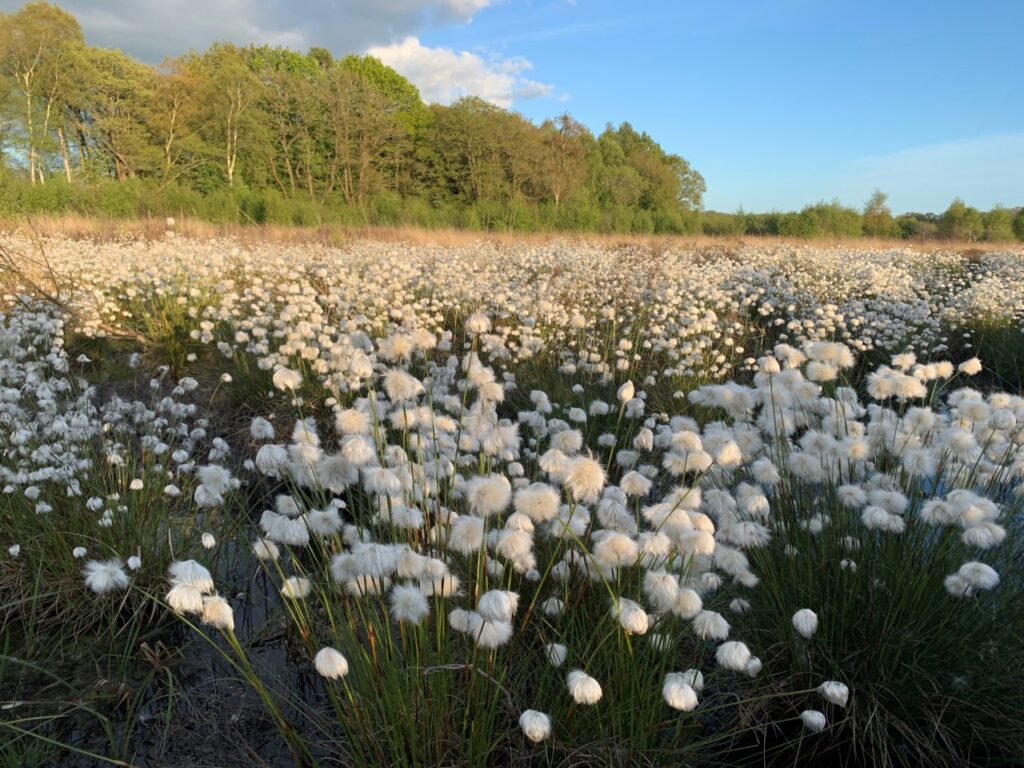Focus on Wem Moss – Part of the Marches Mosses
February 12, 2022
NOTE: This post contains a link to an external website.
Wem Moss remains an ancient piece of wilderness, an outstanding example of a lowland raised bog.
Overview
Wem Moss covers 28 hectares (nearly 70 acres), just 3% of the total 1,000 hectare area of the Marches Mosses. However, it represents the best area of bog habitat on the Mosses, in its history and geology, wildlife, near destruction and restoration by the project team.
Wem Moss is the most southerly of the Fenn’s, Whixall, Bettisfield, Wem and Cadney Mosses that make up the Marches Mosses. It and Cadney Moss are part of the same peat body and are connected to the main Fenn’s, Whixall and Bettisfield Moss site by a neck of peat linking it to Bettisfield Moss on its northern flank.
Sitting in a basin surrounded by higher ground to the east, south and west, Wem Moss is surrounded by a thick ring of trees which have encroached onto the Moss since the 1960s. Along with the other areas of the Mosses, it’s part of the Fenn’s and Whixall NNR and is an SSSI site. Wem Moss is also a Shropshire Wildlife Trust Nature Reserve.
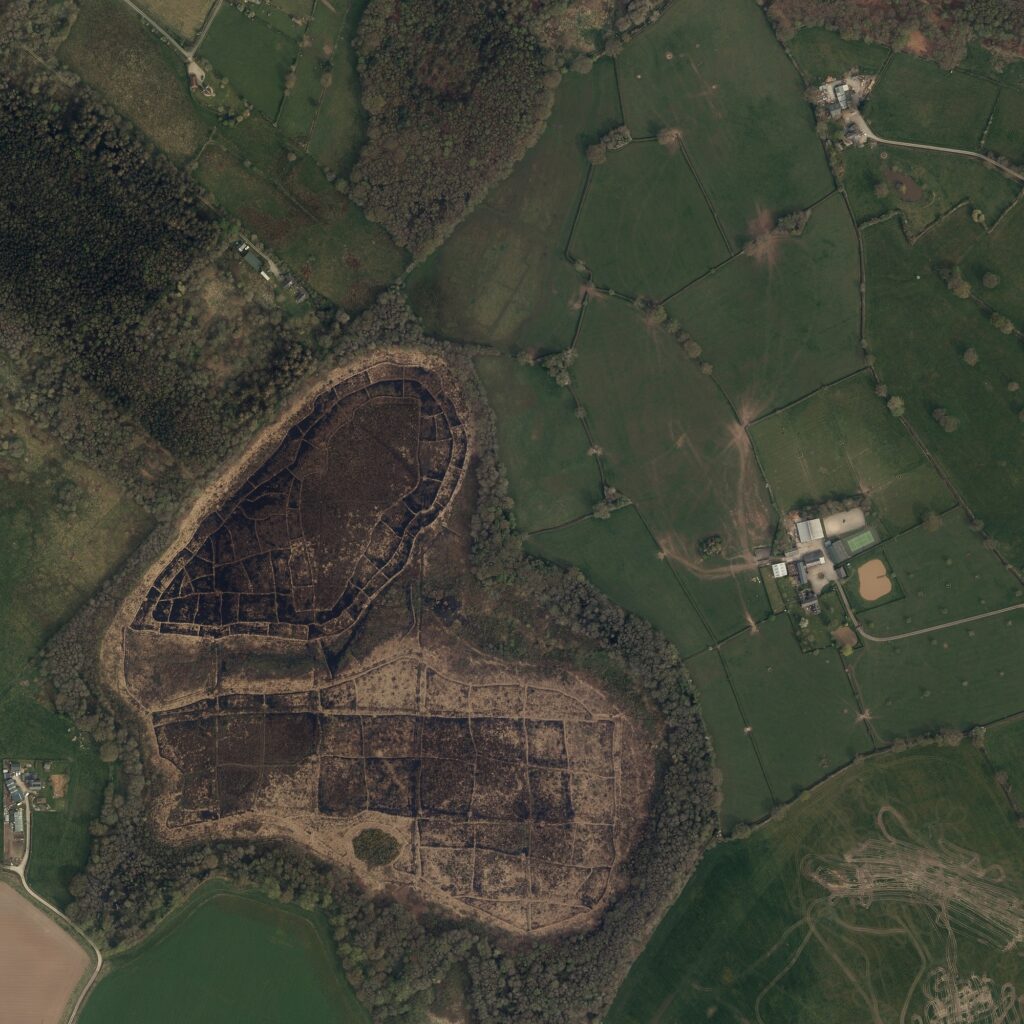
Damage to Wem Moss
While Wem Moss was damaged by peat cutting and drainage over the centuries, it suffered much less than the main Mosses, leaving it as a nearly intact lowland raised bog. In fact, Wem Moss is made up of two peat domes, each around 85m high, intersected by a shallow, linear stretch of lagg.
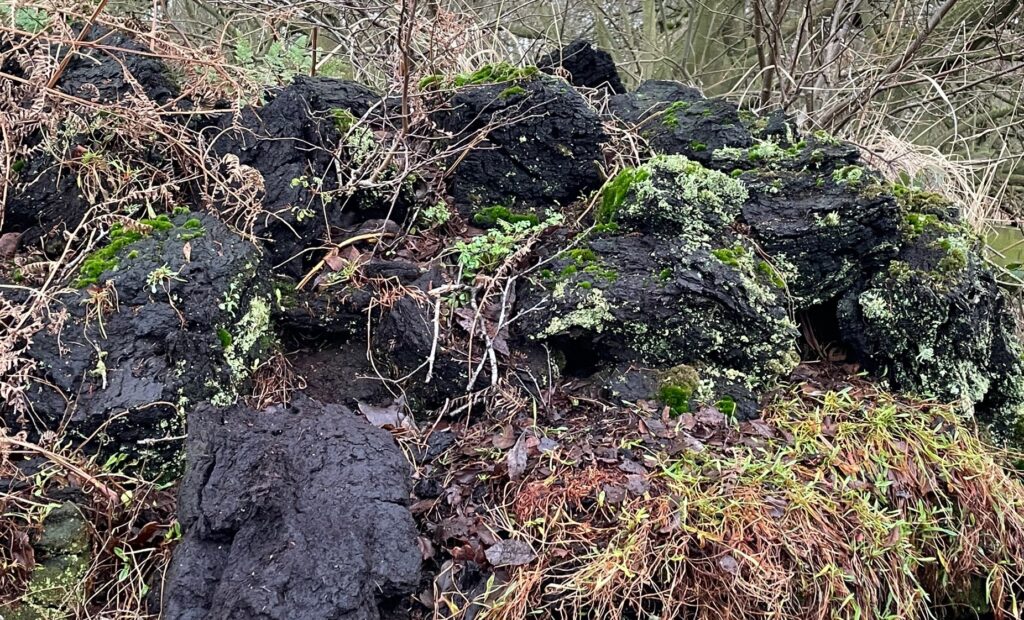
While peat on Wem Moss was never cut commercially, it was cut by local residents for fuel. They used the “Whixall Bible” method of cutting, which created long pits that later flooded. As a result, the surface is very uneven from these cuttings and cracks left by drainage.
Two large drains were cut in the 1800s: the Border Drain at the north that dates from 1823 and was deepened in 1958 and again in 1983; and the Southern Boundary Ditch, which marks the southern edge of the peat body. These were installed to drain the peatland before people understood the importance of preserving the peat with its amazing carbon store.
Drainage led to the slumping of the northern dome and cracking of the peat at the surface. Experts estimated that, by early in the 21st Century, the dome had lost 30cm in height. Multiplying that by the large area of the dome gives an idea of the vast amount of peat – and carbon – that was lost.
Wildlife also suffered from the damage to the peat. As the site dried out, willow, alder and birch trees took advantage and spread across the Moss. By the early 2000s, only small fragments of the rarer mire community, including bog-specialist plants like sundew and white beak sedge, remained. These were localised and vulnerable to further damage.
Repairing the Damage and Preventing Further Loss of Peat
Restoration work began in 1999, when an interceptor drain was installed. This runs parallel to the Southern Boundary Drain and has two purposes: first, to prevent nutrient-rich mineral soil from entering the peat and, second, to control water levels on the Moss.
The rare open bog community relies on favourable conditions being in place. Most importantly these are a wet and squelchy water table and an acidic, low nutrient water chemistry, fed by clean rainfall. Where enriched water from mineral soils occurs, it produces conditions that allow more competitive plants like grasses and trees to get a foothold; these can, over time, encroach and shade and dry out the bog plant community. A healthy bog plant community is a sign that the carbon store locked in the peat below is protected from release; it’s also a sign that vegetation is sequestering carbon from the atmosphere.
Beginning in 2003, Shropshire Wildlife Trust teams and volunteers blocked additional, smaller drains and installed sheet piling to keep water on the peat. These were sheets of corrugated plastic buried vertically into the peat around the site. These teams also began the difficult task of removing the trees and other invasive plants.
Since the start of the BogLIFE restoration project in 2016, the BogLIFE project team and the Trust’s Reserve Manager and volunteers have repacked the peat to create low bunds in a cellular pattern to better retain the rain water and managed the growth of trees and invasive plants.
Wildlife on Wem Moss
Restoration work has resulted in an encouraging revival of fortunes for a range of the scarcer bog plants such as the golden bogmoss Sphagnum pulchrum and bog myrtle, the only site in Shropshire where it’s found. Large heath and brimstone butterflies have been spotted, along with birds such as willow warbler and chiff-chaff. Raft spiders live on the edge of the deep ponds.
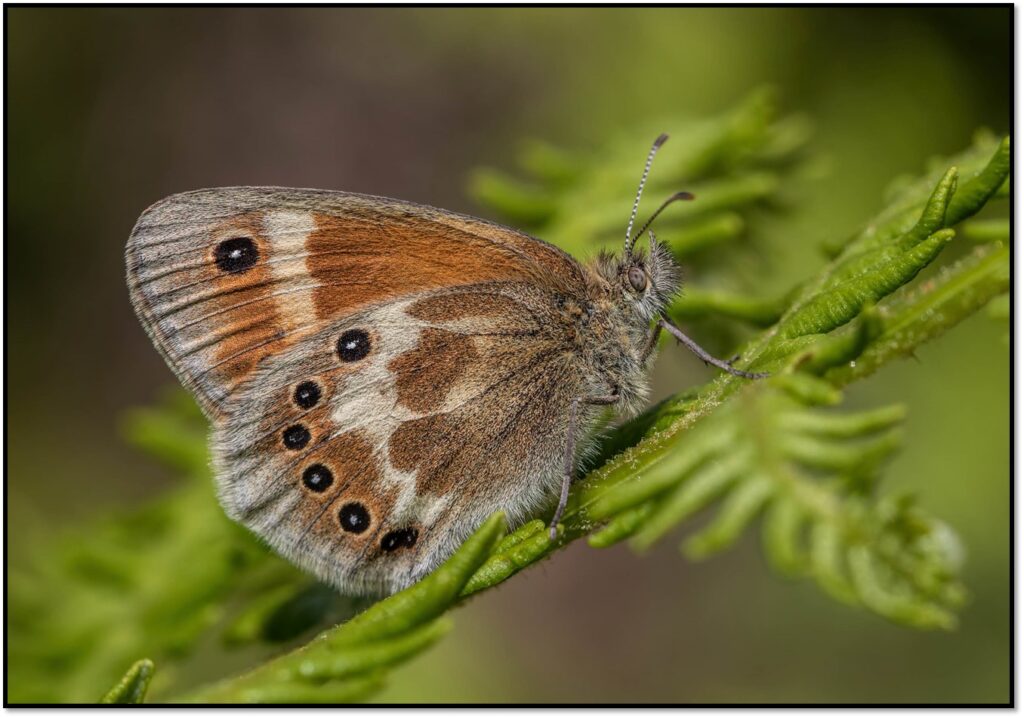
Large heath butterfly Credit: Stephen Barlow 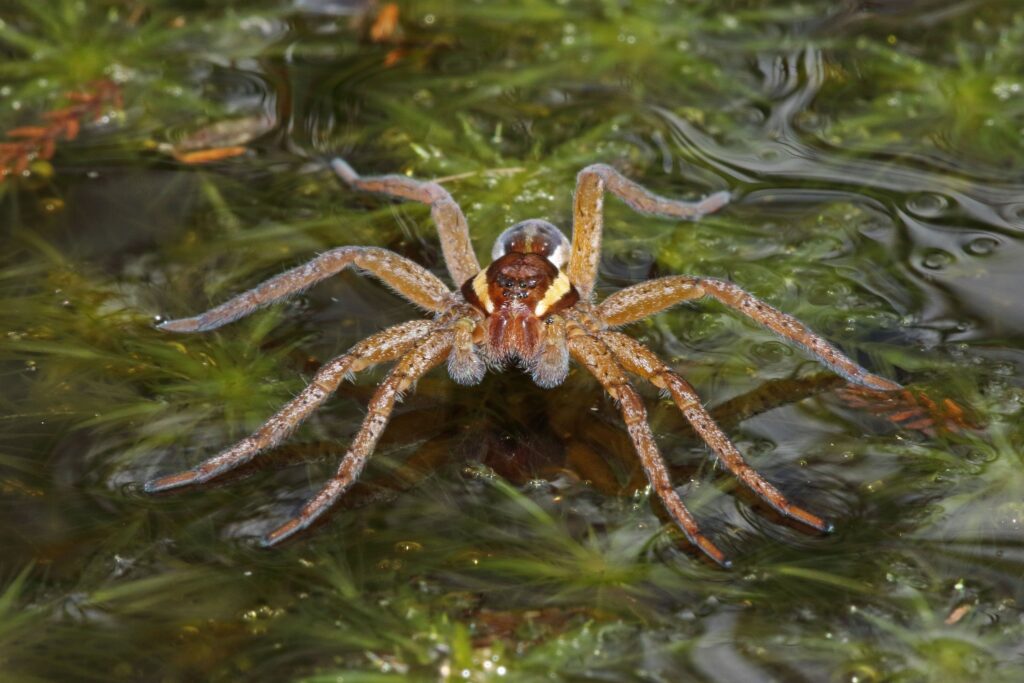
Raft spider credit: Allan Heath
Archaeology and historical features
Like the rest of Marches Mosses, Wem Moss is about 12,000 years old, formed at the end of the last Ice Age. Pollen samples from deep in the peat suggest the Moss began as a water body, became a swamp as plant life moved in, then a sedge fen, reed carr and finally peat.
Tree stumps have been found in deep peat, indicating that woodland may have covered the surface in drier climate periods. Unlike on Fenn’s and Whixall Mosses, no bog bodies have been found.
A 1631 map shows the same basic outline as the Wem Moss we know today. An 1818 map called it “Blackford Heath” while later maps and folklore called it “Wem Heath” before the site became known as Wem Moss.
Visiting Wem Moss
Wem Moss provides a sense of untamed wilderness and isolation for visitors. Entrance is over a wooden bridge, through a squeeze stile and then through the trees to the open Moss. This is a flat peat bog, so can be very wet and soft at times with some deep pools and uneven ground.
You can find more information and directions to Wem Moss here.
